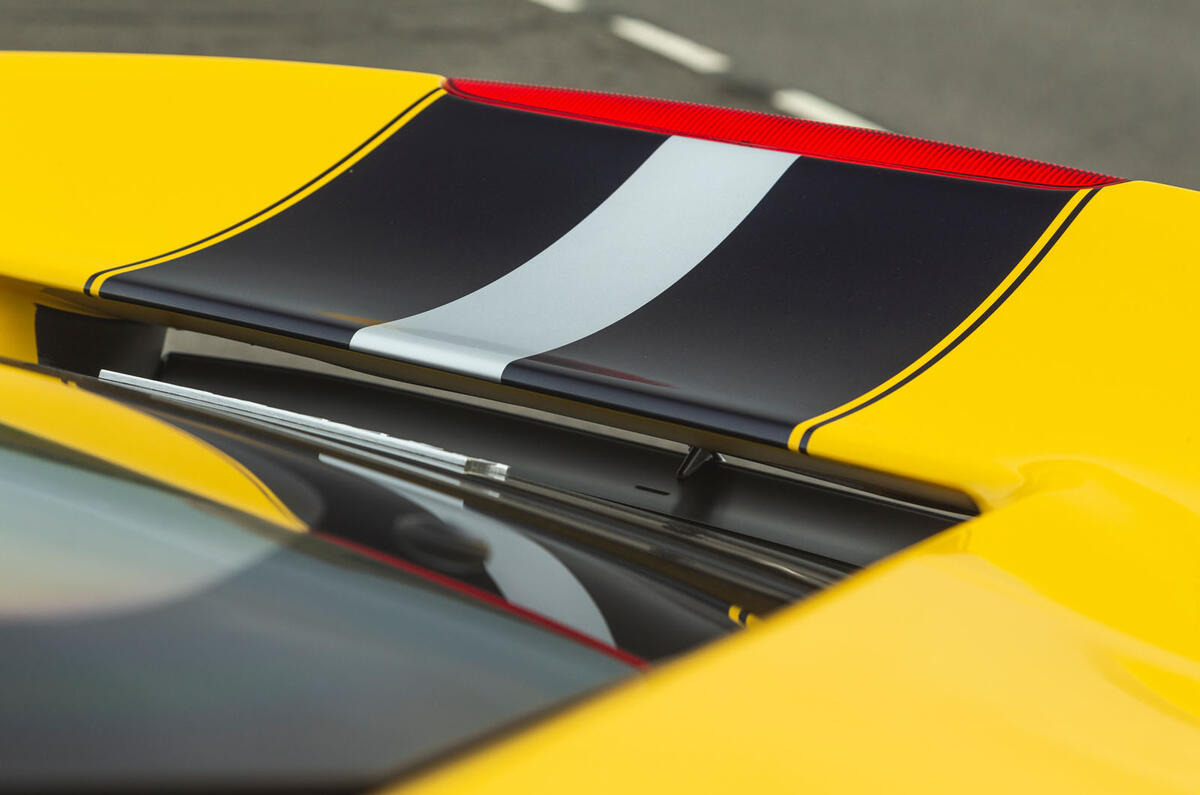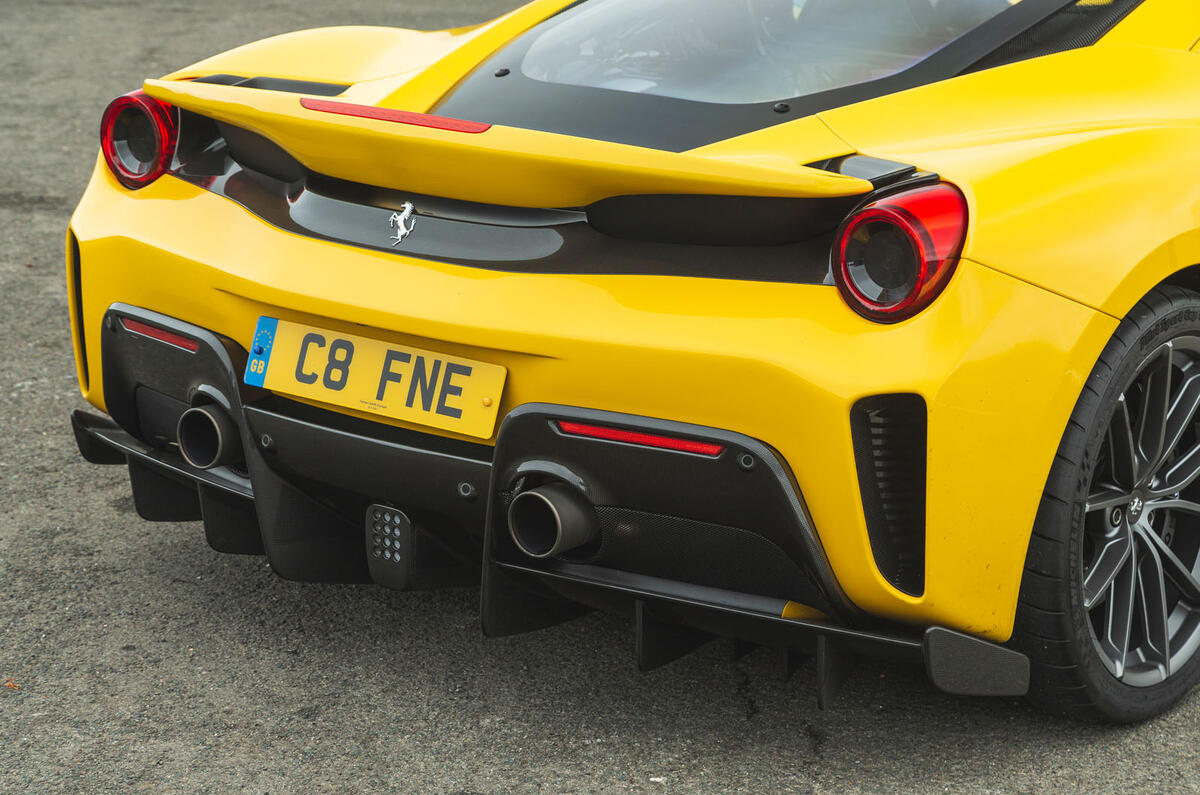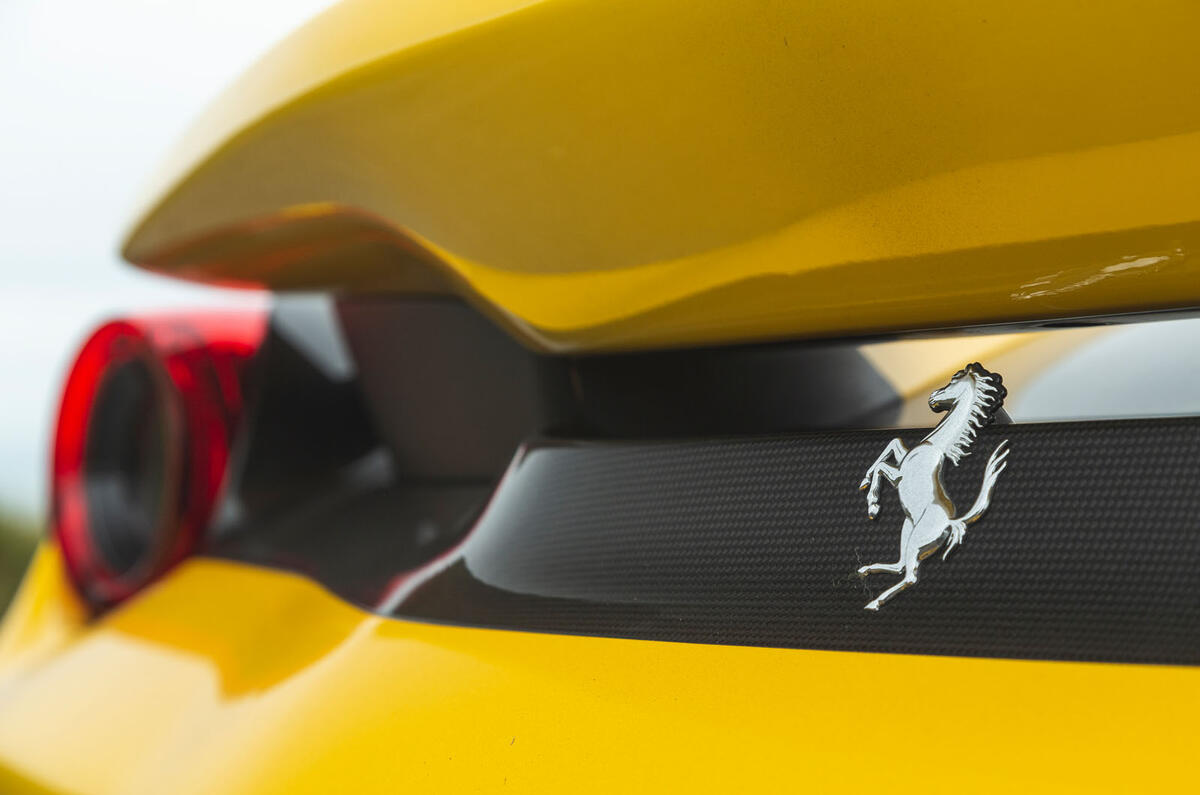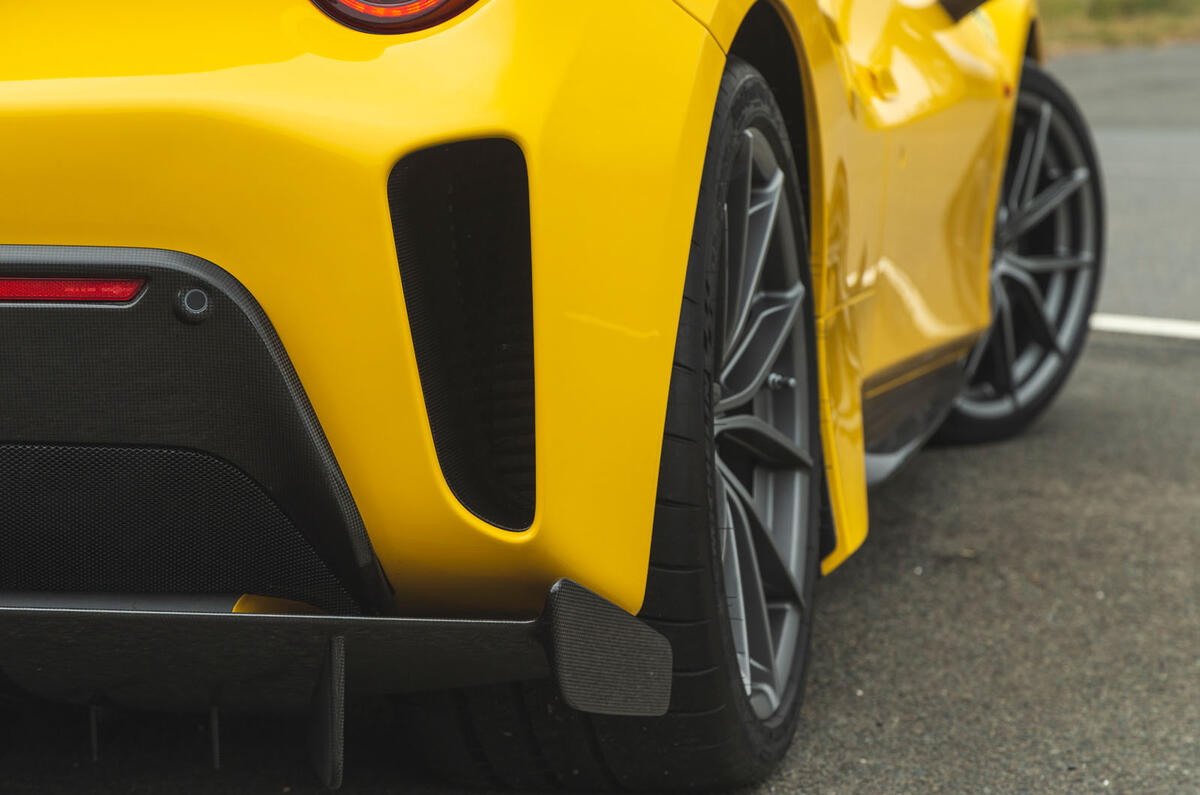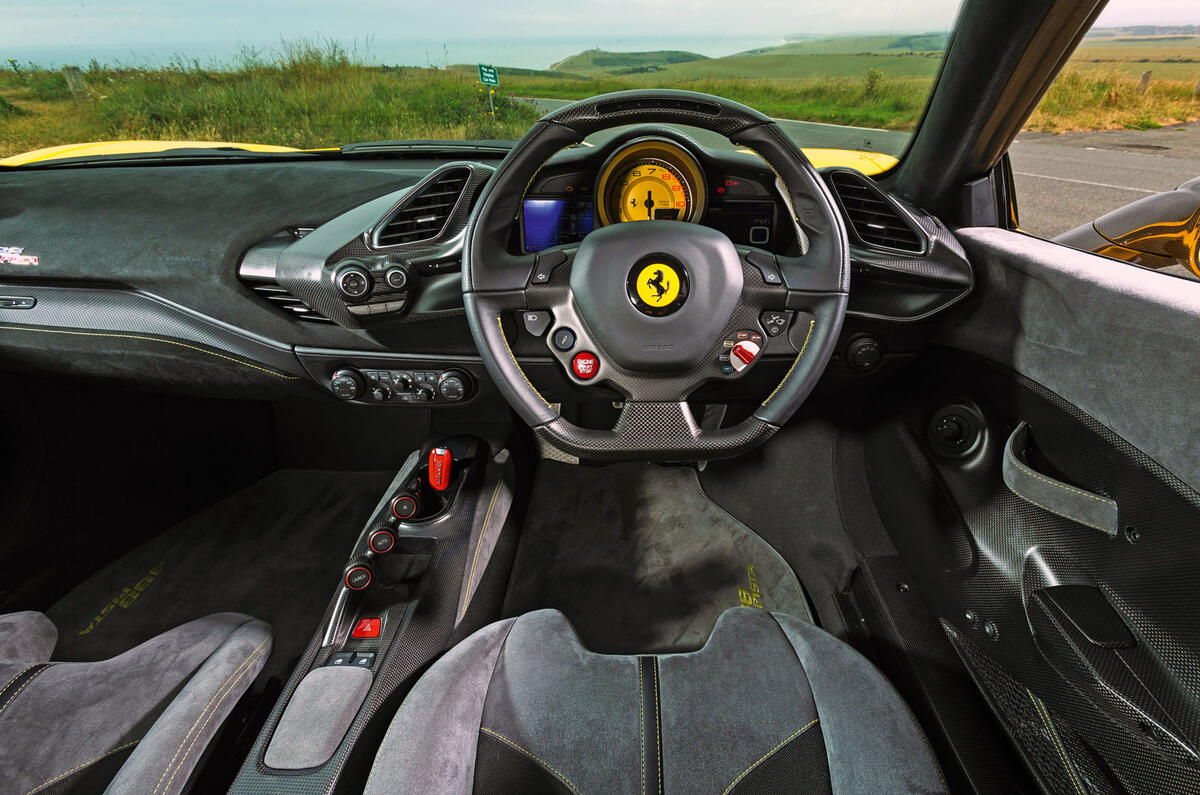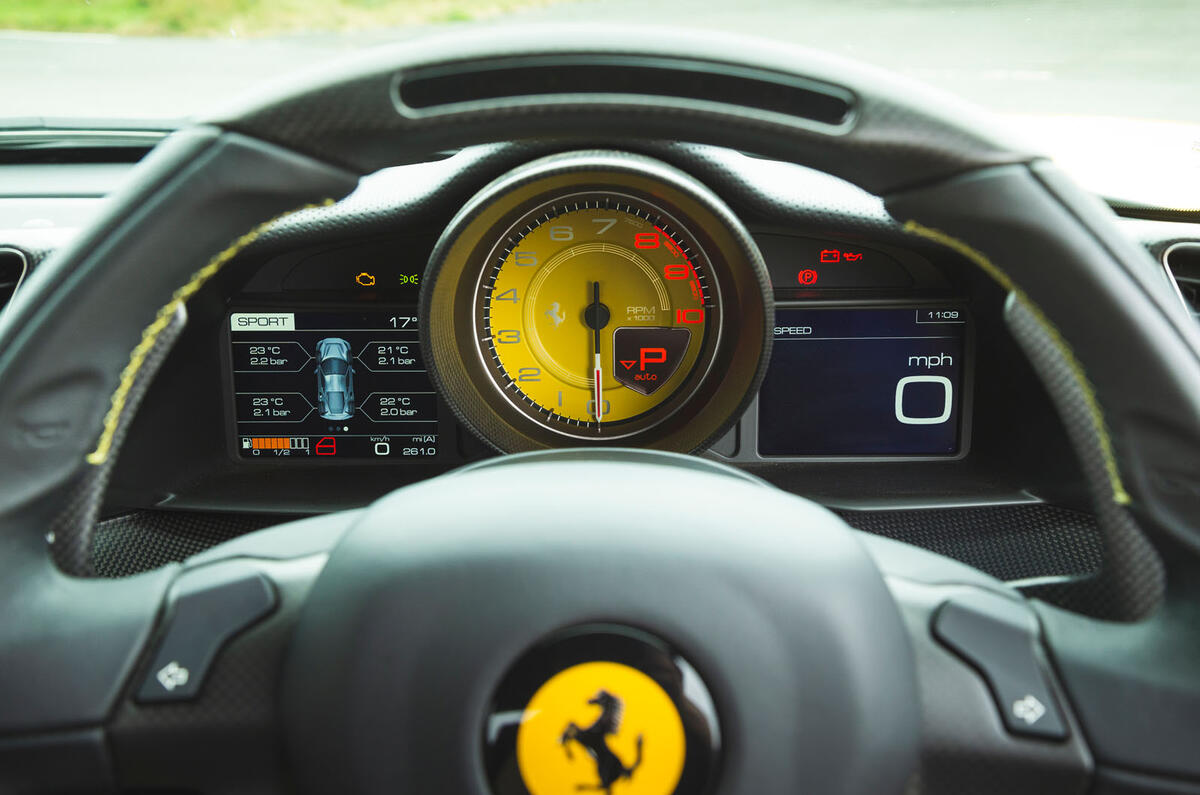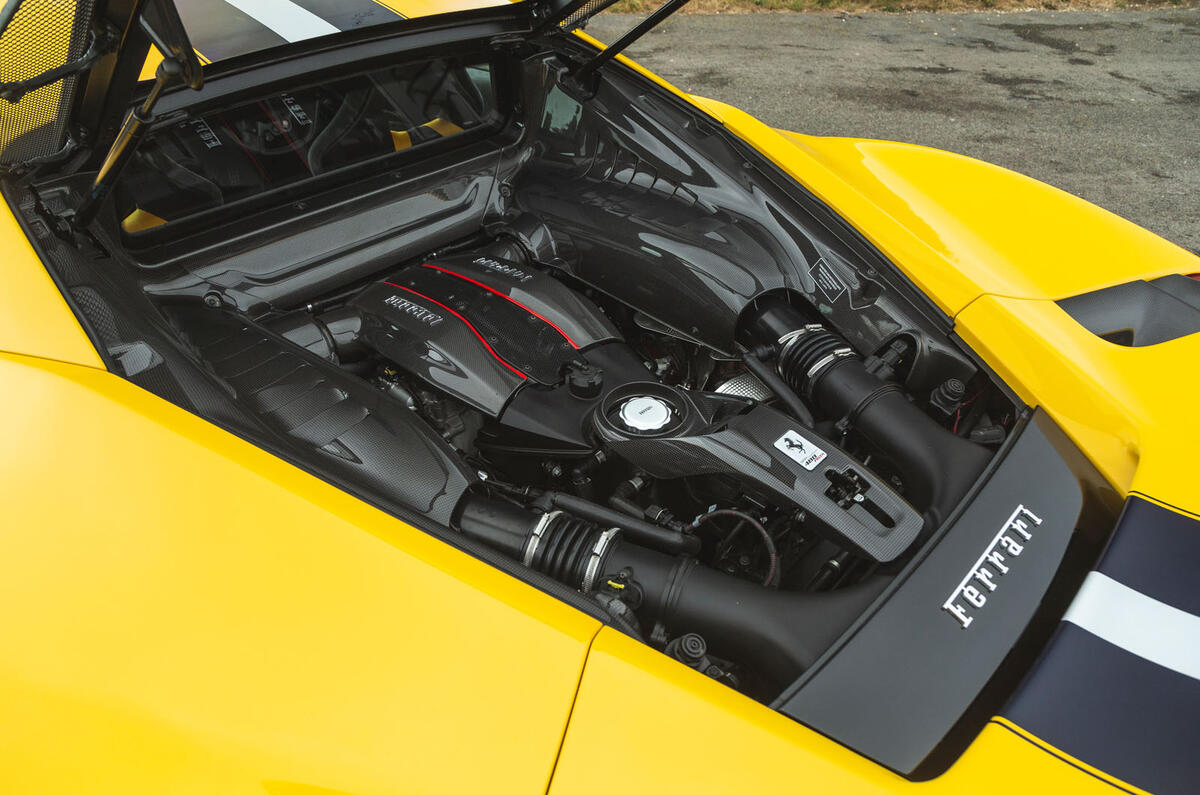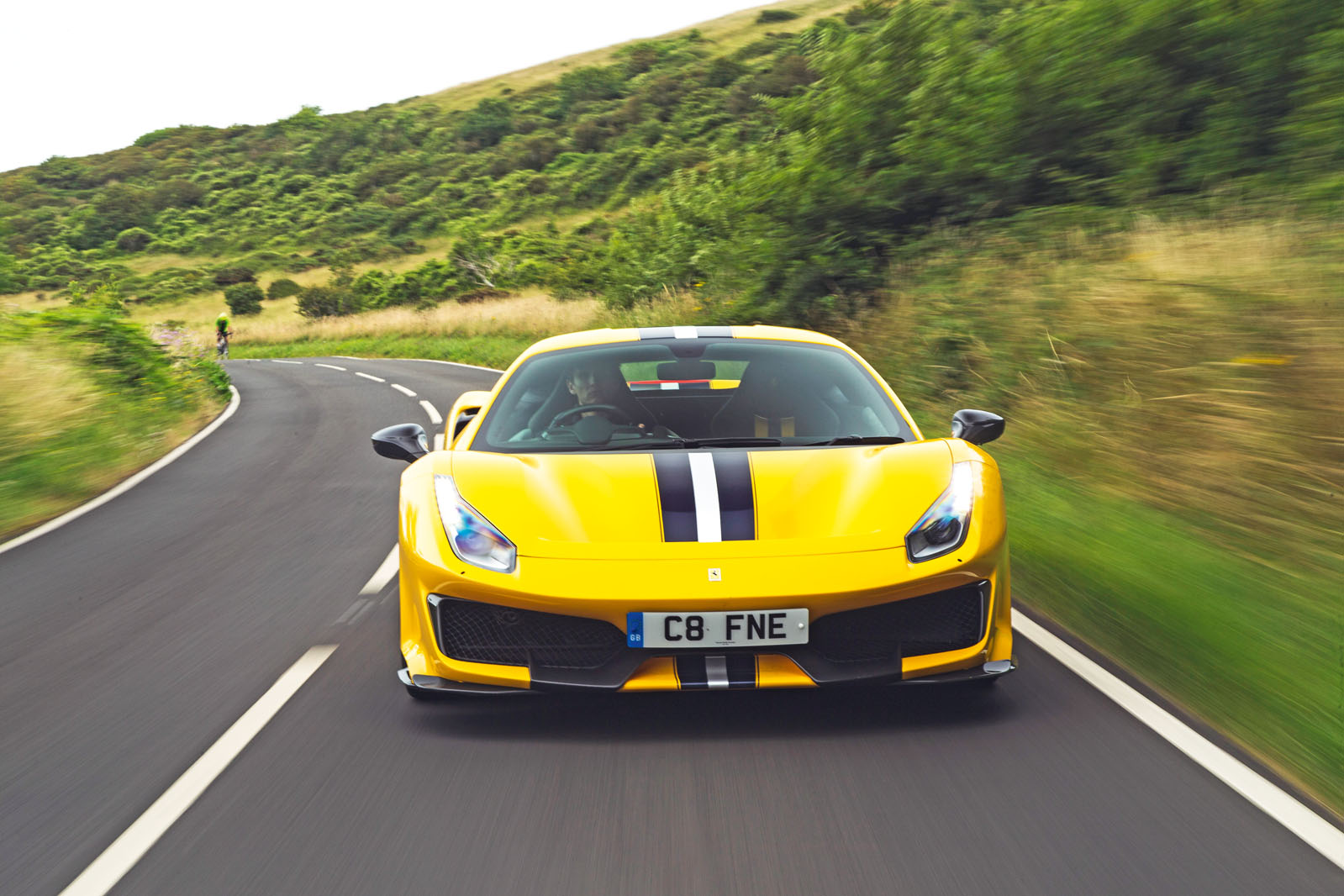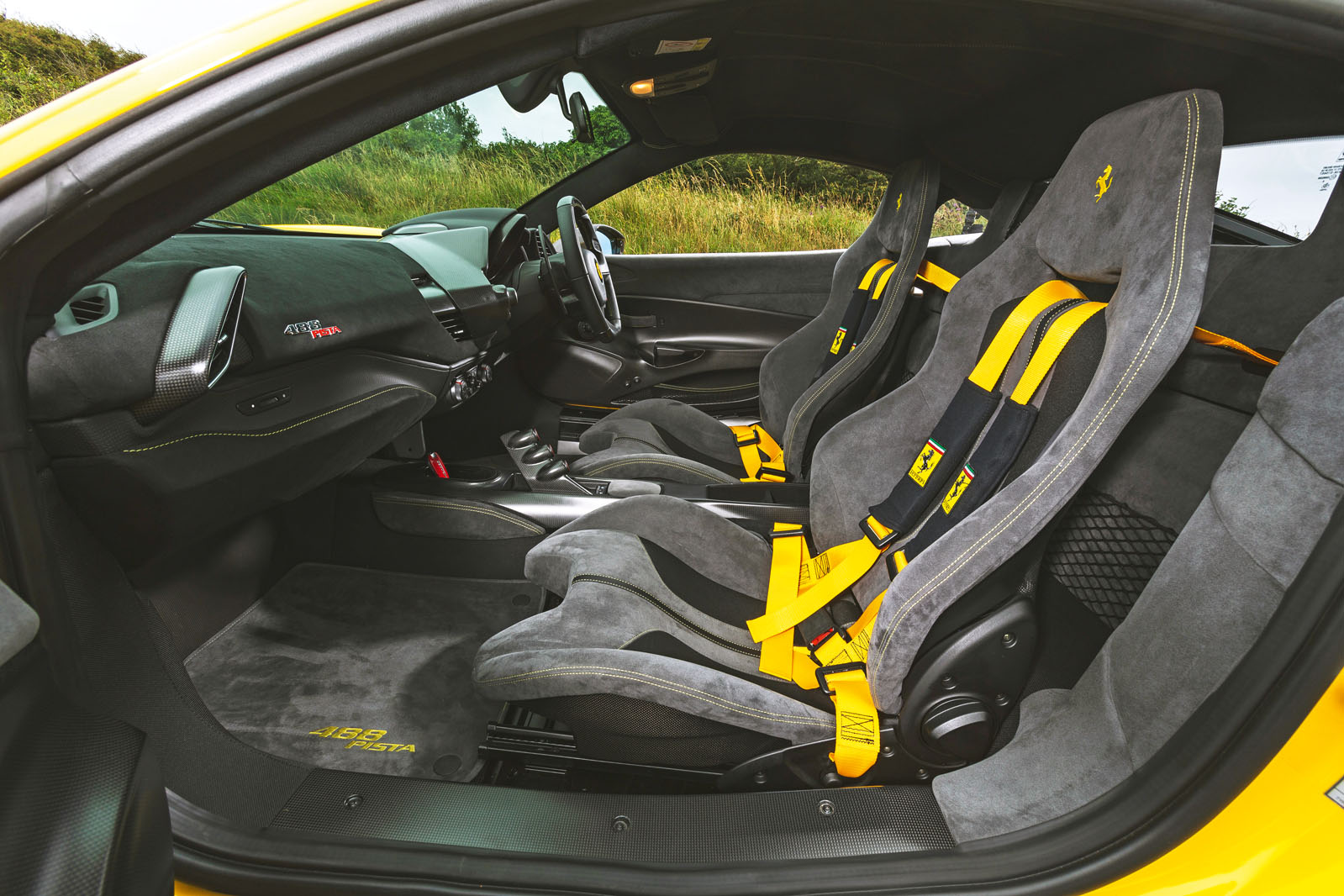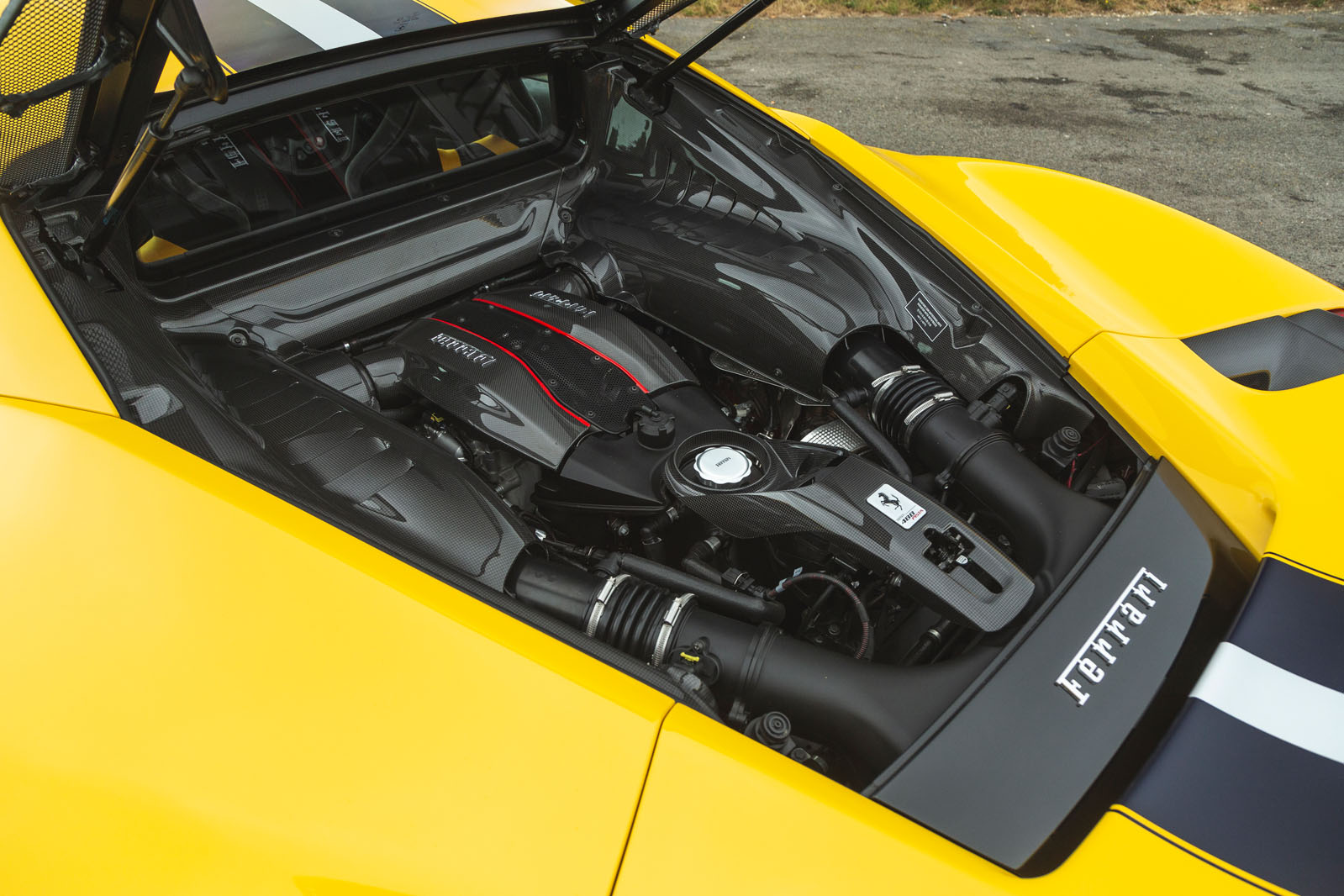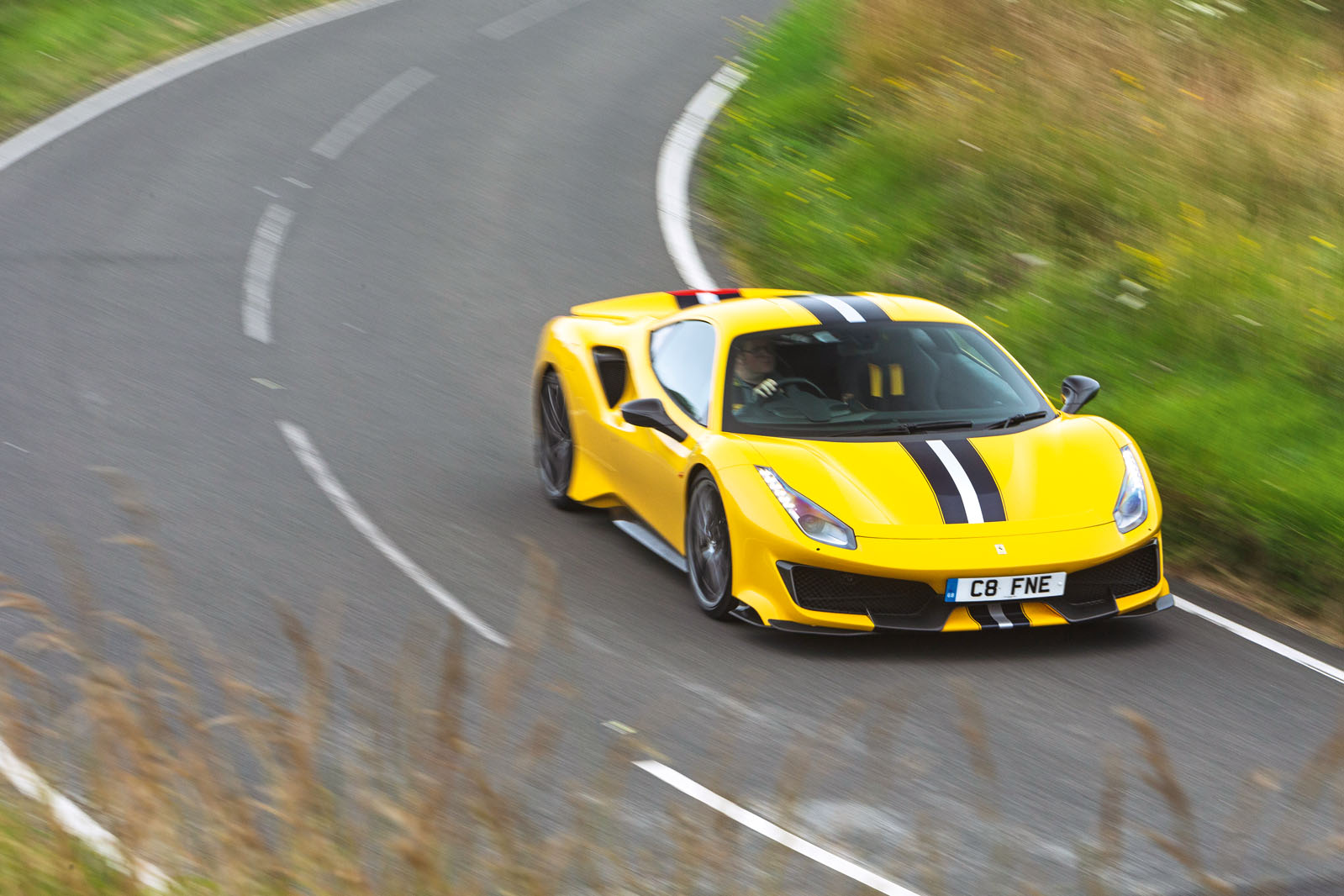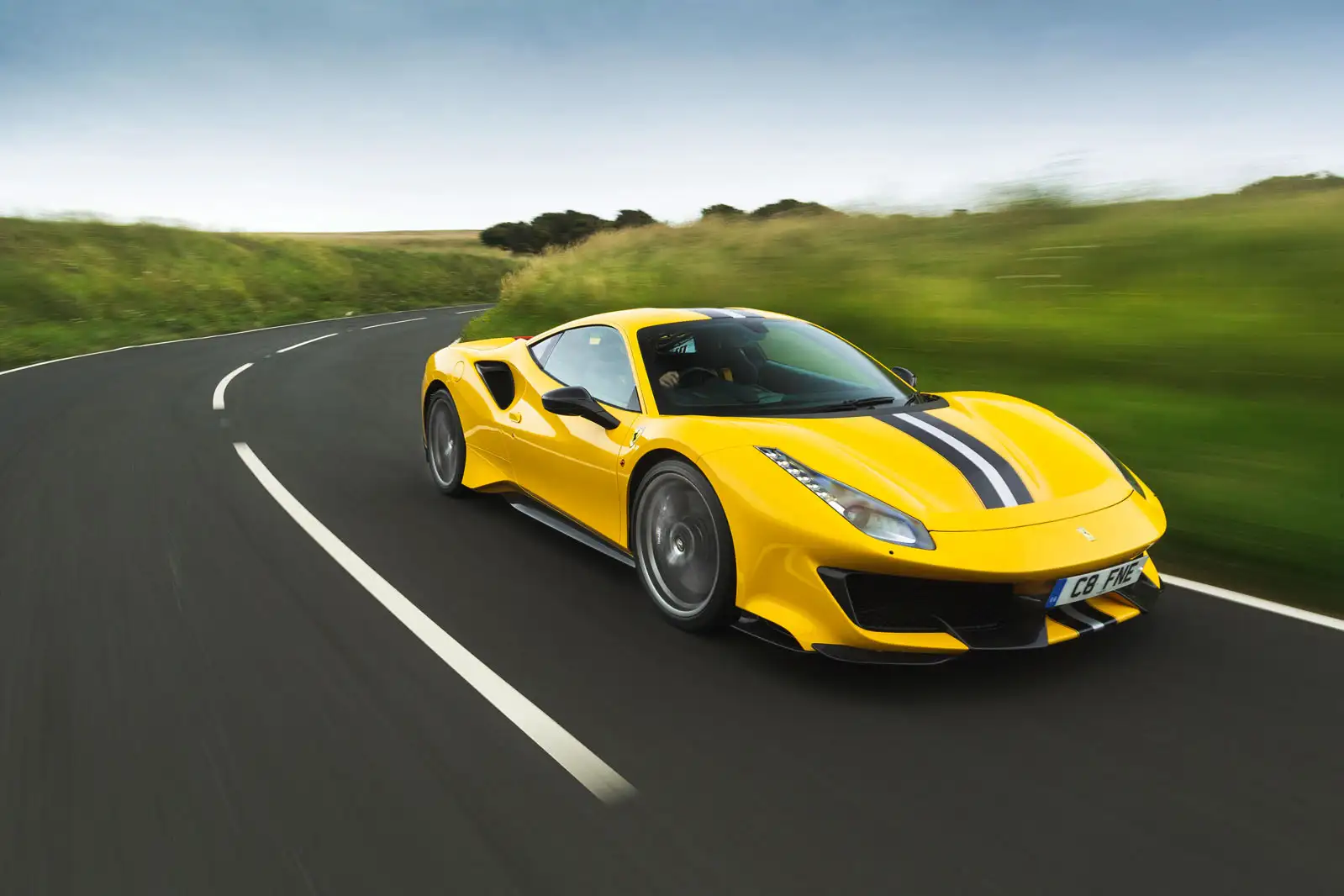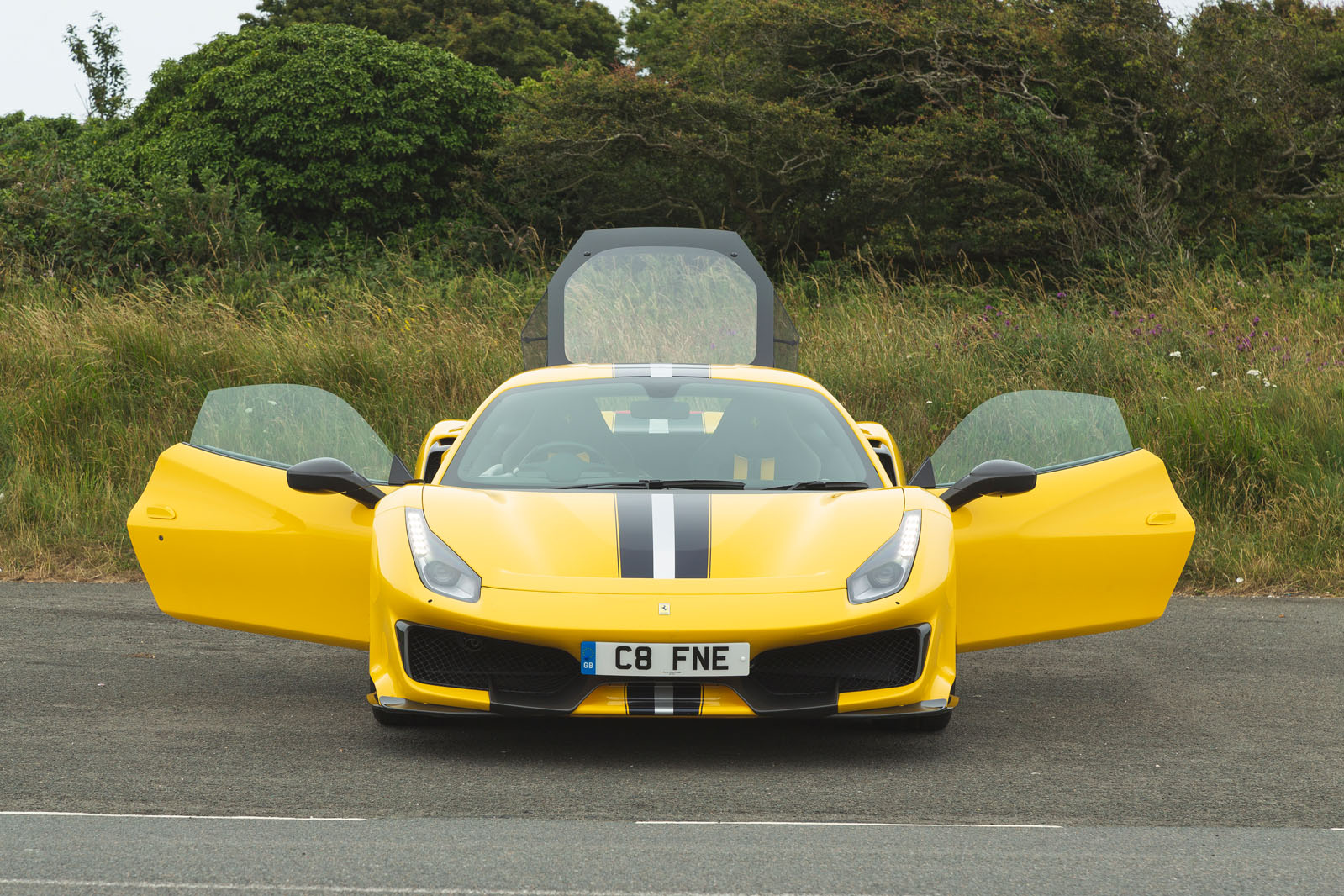The track-ready ‘special series’ V8 supercar, delivered as the sun sets on another mid-engined Modenese model generation, has become a go-to piece of product strategy for Ferrari.
Starting with the 360 Challenge Stradale in 2003 and taking in the subject of this week’s road test – the 488 Pista – we’ve now seen a line of four consecutive examples of the breed. However, none of the 488 Pista’s predecessors – the 360 CS, 430 Scuderia and 458 Speciale, and before those the 348 GT Competizione of 1993 – represented such a titanic leap in performance as this.
Thanks to this car, the extra-hardcore ‘junior’ Ferrari has skipped out a whole stratum of the supercar hierarchy: whereas a Speciale made a peak 597bhp, the Pista cranks the power all the way up to 710bhp, neatly vaulting over the 600-and-something-horsepower supercar class without so much as a downward glance.
A twin-turbocharged V8 engine with 50% new components is what has allowed the Pista to advance so quickly; and while you might think such horsepower-grabbing pace unsustainable, it is after all only enough to allow this car to match a McLaren 720S for peak power and torque. Elsewhere, there’s a familiar mix of new downforce-generating carbonfibre bodywork, a stripped-out lightweight cabin treatment and a track-intended suspension overhaul to report on – and we’ll cover them all over the next few pages.













